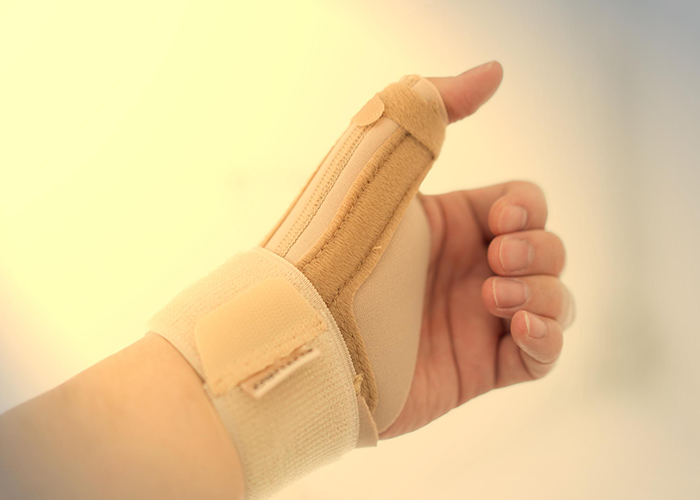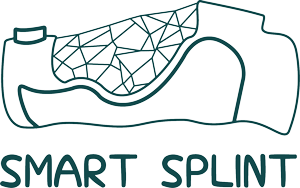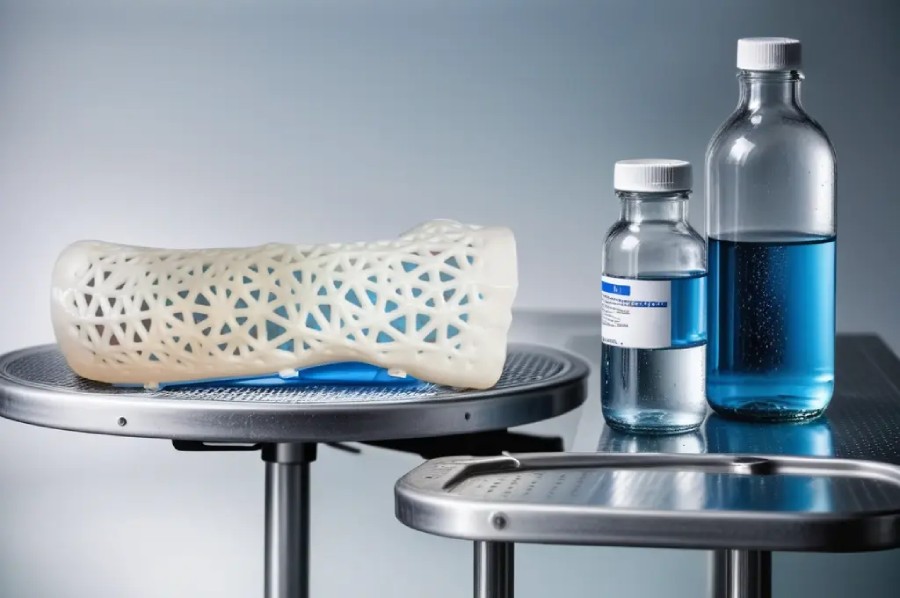
Comfort and Wear: Tips for Maximizing Comfort While Wearing a Splint
Introduction:
Wearing a splint can be a necessary part of the healing process for various injuries or medical conditions. However, it can sometimes cause discomfort and inconvenience. The good news is that there are several ways to enhance comfort and wearability while using a splint. In this blog, we will explore tips and techniques to maximize comfort through material choices, breathability, and adjustability.
-
Choose the Right Material:
When it comes to choosing the right material for your splint, there are a few factors to consider. First and foremost, prioritize softness. Look for materials that have a gentle touch against your skin, as this will minimize discomfort and irritation. Soft materials can help prevent chafing or rubbing that may occur during prolonged wear.
In addition to softness, consider the weight of the material. Lightweight splints are more comfortable to wear for extended periods, as they place less strain on your body. Bulky or heavy materials can be cumbersome and may restrict your movement, making daily activities more challenging.
Skin-friendliness is another crucial aspect to consider. Some individuals may have sensitivities or allergies to certain materials. It’s essential to select a splint material that is hypoallergenic and won’t cause any adverse reactions. Common skin-friendly materials include foam, neoprene, and cotton. These materials are known for their breathability and ability to minimize skin irritation.
Breathability is a key feature to look for in splint materials. When your skin is confined within a splint for an extended period, heat and moisture can build up, leading to discomfort and potential skin problems. Breathable materials, such as cotton, allow air circulation and promote ventilation, helping to keep your skin dry and cool. This is particularly important in warmer climates or during physical activities when perspiration is more likely.
Ultimately, the right material for your splint will depend on your specific needs and the nature of your injury or condition. Consulting with your healthcare provider or orthopedic specialist can provide valuable insights and recommendations based on your circumstances. They can guide you in selecting a splint material that offers optimal comfort, ensuring a more pleasant experience while wearing the splint and supporting your healing process.
2. Prioritize Breathability:
When it comes to maximizing comfort while wearing a splint, prioritizing breathability is key. Proper airflow helps prevent excessive sweating, skin irritation, and unpleasant odors. Here are some tips to prioritize breathability:
Look for Breathable Designs:
When selecting a splint, opt for designs that incorporate breathability features. Some splints have built-in ventilation holes or perforations that promote air circulation. These openings allow heat and moisture to escape, reducing the risk of skin irritation and discomfort.
Choose Breathable Materials:
Consider splints made from breathable materials such as mesh, neoprene, or fabrics with moisture-wicking properties. These materials allow air to pass through and facilitate the evaporation of sweat, keeping your skin dry and cool.
Moisture-Wicking Liners or Pads:
Enhance breathability by using moisture-wicking liners or pads underneath the splint. These liners are designed to draw moisture away from your skin, helping to keep it dry and reducing the potential for skin irritation. Look for liners made from materials like polyester or bamboo, which are known for their moisture-wicking properties.
Regular Cleaning and Drying:
Maintain proper hygiene by regularly cleaning your splint and ensuring it is thoroughly dry before wearing it again. Moisture trapped within the splint can lead to bacterial growth and unpleasant odors. Follow the manufacturer’s instructions for cleaning and drying to ensure optimal breathability.
Avoid Moisture-Trapping Clothing:
The clothing you wear underneath the splint can also affect breathability. Opt for lightweight, breathable fabrics such as cotton or moisture-wicking materials that allow air circulation and promote sweat evaporation. Avoid tight-fitting or synthetic fabrics that can trap moisture and contribute to discomfort.
Take Breaks and Allow Air Exposure
Whenever possible, take short breaks from wearing the splint to allow your skin to breathe. During these breaks, gently expose the affected area to fresh air to promote ventilation and help regulate temperature and moisture levels.
Remember, while breathability is important, it’s essential to strike a balance between breathability and the necessary support and stability provided by the splint. Consult with your healthcare provider or orthopedic specialist to ensure that the splint you choose strikes the right balance between comfort and functionality.
By prioritizing breathability through splint design, material choices, moisture-wicking liners, and proper hygiene, you can minimize discomfort, promote skin health, and enhance overall comfort while wearing a splint.
3. Ensure Proper Fit and Adjustability:
Ensuring a proper fit and adjustability is essential for maximizing comfort while wearing a splint. Here are some tips to help you achieve the right fit:
Proper Sizing:
Start by selecting a splint that is the appropriate size for your specific needs. Splints come in various sizes to accommodate different body parts and individuals. Follow the manufacturer’s sizing guidelines or consult with your healthcare provider to determine the correct size for your condition.
Adjustable Straps or Closures
Many splints feature adjustable straps, Velcro closures, or other mechanisms that allow you to customize the fit according to your comfort level. Take the time to adjust these straps properly to achieve a snug yet comfortable fit. Avoid overtightening, as it may restrict blood circulation or cause discomfort. Likewise, ensure that the splint is not too loose, as it may not provide adequate support.
Accommodate Swelling
Swelling is common in many injuries or conditions that require splinting. Look for splints with adjustable features that can accommodate changes in swelling. As your swelling fluctuates, you may need to adjust the straps or closures to maintain a proper fit. This adaptability ensures continued comfort and promotes healing.
Follow Healthcare Provider’s Instructions
Your healthcare provider or orthopedic specialist will provide specific instructions on how to adjust and wear your splint. It’s essential to follow their guidance to ensure a proper fit and optimize the healing process. They may also provide recommendations on when and how long to wear the splint to balance support and comfort.
Regularly Assess Comfort
Pay attention to how the splint feels during wear. If you experience excessive pressure points, rubbing, or discomfort, it may indicate that the splint needs adjustment or modification. Regularly assess your comfort level and consult with your healthcare provider if you have concerns or discomfort that persists.
Remember, splints are intended to provide support, stability, and protection while allowing for proper healing. A well-fitting and adjustable splint can significantly enhance comfort and promote a positive healing experience. If you have any questions or concerns about the fit or adjustability of your splint, don’t hesitate to reach out to your healthcare provider or orthopedic specialist for guidance.
4. Padding and Cushioning:
If your splint lacks sufficient padding or cushioning, you may experience discomfort due to pressure points or rubbing. Consider adding extra padding using soft materials such as foam or gel inserts. These additions can provide additional support, distribute pressure evenly, and reduce friction against your skin, making your splint more comfortable to wear.
5. Moisture Management:
Sweating can lead to skin irritation and unpleasant odors while wearing a splint. To manage moisture effectively, consider using moisture-absorbing powders or applying antiperspirant to areas prone to sweating. Additionally, you can use moisture-wicking fabrics for the clothing worn underneath the splint to help keep your skin dry and comfortable.
6. Skin Care:
Proper skin care is essential to prevent irritation or complications associated with wearing a splint. Regularly inspect your skin for redness, rashes, or sores. Clean and moisturize your skin as recommended by your healthcare provider. Avoid using harsh soaps or lotions that may cause dryness or irritation. Following a good skincare routine will help maintain comfort while wearing a splint.
7. Mindful Movement and Rest:
While wearing a splint, it’s important to strike a balance between movement and rest. Follow your healthcare provider’s instructions regarding movement limitations, but also engage in gentle exercises or stretches that do not interfere with the healing process. Taking regular breaks to rest and elevate the affected area can also alleviate discomfort and reduce swelling.
8. Seek Professional Guidance:
If you experience persistent discomfort or have concerns about your splint, don’t hesitate to consult your healthcare provider or orthopedic specialist. They can assess the fit, provide additional suggestions, or recommend alternative splinting options that may better suit your needs.
Conclusion:
Wearing a splint doesn’t have to be an uncomfortable experience. By making informed choices regarding material selection, breathability, and adjustability, and following these practical tips, you can enhance comfort and wearability while maximizing the benefits of your splint. Remember, each individual’s situation may vary, so it’s important to consult with your healthcare provider for personalized advice. Prioritizing comfort throughout the healing process can contribute to a smoother recovery and improved overall well-being.
References:


